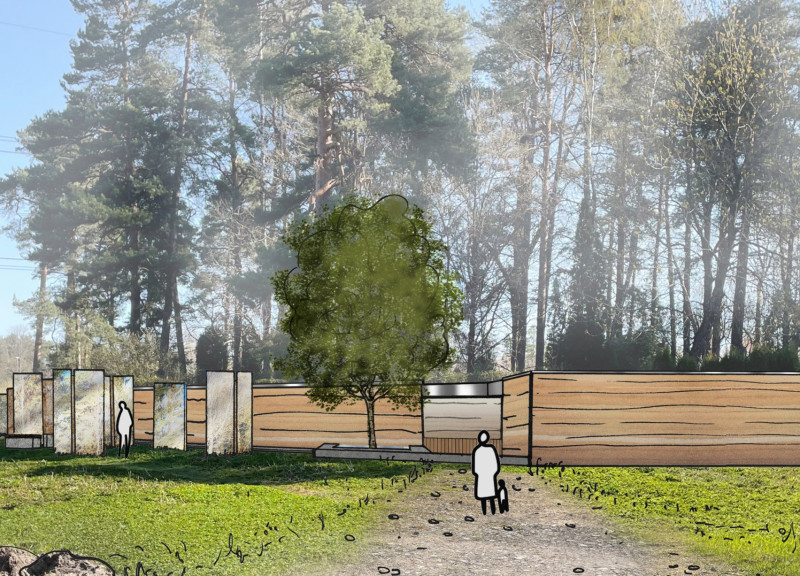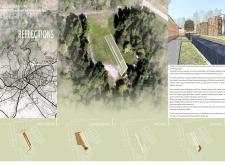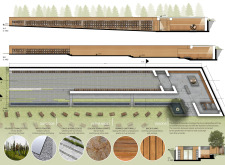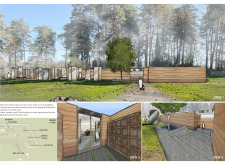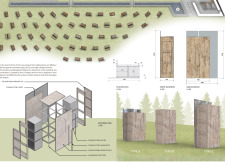5 key facts about this project
At the heart of this architectural design is the concept of connectivity—between nature, community, and built form. The layout is carefully designed to create fluid transitions between indoor and outdoor spaces, allowing for natural light to permeate throughout. Large, strategically placed windows not only offer picturesque views but also serve to enhance the users' experience of the surrounding landscape. The incorporation of outdoor terraces and green roofs speaks to a commitment to blend the structure with its environment, promoting an ecological approach that feels increasingly vital in contemporary architecture.
Materiality plays a critical role in the project's overall expression. A series of sustainable materials have been employed thoughtfully throughout, including reclaimed wood for accents, steel for structural support, and glass to provide transparency and openness. The use of local stone appropriately grounds the structure in its geographical location, offering a sense of permanence while celebrating regional characteristics. This choice of materials not only enhances aesthetic appeal but also resonates with the principles of sustainability by reducing transportation impacts and supporting local economies.
Unique design approaches are evident in the innovative use of space. The project employs open floor plans that foster collaboration and interaction among users, eliminating traditional barriers that often exist in architectural designs focused on seclusion. Flexible spaces are also a prominent feature, providing the ability to adapt to a variety of functions—from community meetings to recreational activities—thus promoting an inclusive atmosphere. Moreover, the strategic orientation of the building maximizes energy efficiency by leveraging solar gain, minimizing reliance on artificial heating and cooling.
Every detail has been considered in the architectural design, from the use of biophilic elements that reinforce the connection to nature to the thoughtful selection of colors and textures that encourage a warm and inviting environment. Lighting design complements the architecture by accentuating key features and promoting well-being, ensuring that the project monitors the psychological and physical needs of its occupants.
The architectural plans reveal a meticulous approach to the layout, with sections illustrating how the structure interacts with its site context while addressing spatial requirements. The architectural sections further articulate the relationship between various levels and functions within the building, highlighting an intelligent organization that resonates with user behavior and experience.
Throughout this architectural design, there exists a clear narrative of respect for the environment and the community it serves. While the project incorporates contemporary design trends, it does so while anchoring itself in a dialogue with its surroundings. This balance of modernity and contextual sensitivity demonstrates a sophisticated understanding of the potential for architecture to create meaningful spaces that are not only useful but uplifting.
For those interested in delving deeper into the nuances of this architectural project, exploring the architectural plans, architectural sections, and various architectural ideas presented can provide valuable insights. Engaging with these elements will illuminate the thought processes and innovative strategies employed throughout the design, making it clear how the project achieves its objectives while celebrating the inherent beauty of its setting.


